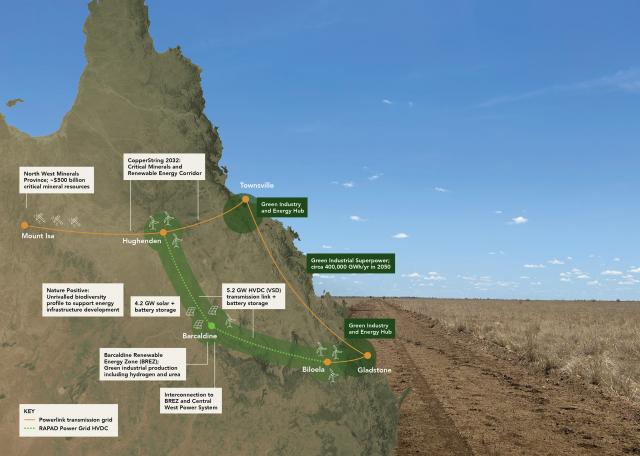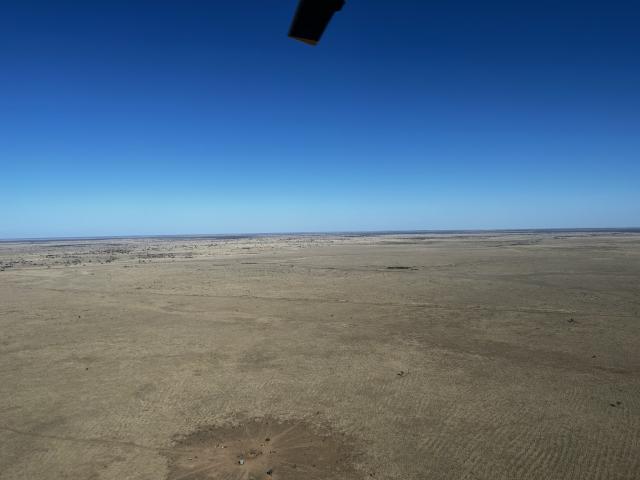Seven rural councils and CopperString’s founders have agreed to work with landholders and communities to establish an estimated 930-kilometre transmission network to help power the state’s green industrial and hydrogen export ambitions, particularly for Gladstone and Townsville.
The Central Western Queensland Remote Area Planning and Development (RAPAD) Board, the Barcaldine Regional Council (BRC) and Queensland firm VisIR Pty Ltd (VisIR) have formalised plans for the development – the RAPAD Power Grid – with a memorandum of understanding (MoU) announced in Brisbane last week.
RAPAD chairman and Longreach Regional Council Mayor Tony Rayner said the central west could help build on the Queensland Energy and Jobs Plan (QEJP) targets for 80 per cent renewables by 2035 through the construction of a new transmission network from Hughenden to Barcaldine and east to Biloela to help power the state’s green industrial and hydrogen export ambitions particularly Gladstone and Townsville.
“Western Queensland has an unrivalled capacity to produce clean energy and green industrial products, such as urea, and export these products across the state, the nation and the world just as our grazing industry has done for generations,” Cr Rayner said.
“With the government’s commitment to deliver CopperString 2032 coming online as part of the Energy and Jobs Plan, and Gladstone and Townsville emerging as green industrial hubs it seems our region might hold the key to Queensland becoming a clean energy superpower.
“We believe a community-led approach, locating transmission lines and other projects where the vast open spaces and environment can facilitate such development will be successful and be great for our region and for Queensland.”
BRC Mayor Sean Dillon said through the agreement between RAPAD, BRC and VisIR, there have been initial and constructive discussions with numerous landholders, and First Nations custodian representatives on the RAPAD Power Grid development.
“Out west, we see the risks of developing energy infrastructure in other regions that are more densely populated, with more intensive agriculture, more vegetation to clear, and lower quality energy resources, and we believe this creates a big economic opportunity for our region that we want to capture,“ Mr Dillon said.
“To capture this opportunity, we will need a new transmission line that links the important Townsville to Mount Isa CopperString corridor at Hughenden through the central west and into the industrial and energy centre in Biloela and Gladstone.”
The RAPAD Power Grid will comprise a massive 5.2gW of world-leading HVDC transmission technology, and approximately 4200 megawatts of solar generation.
“We only need to utilise 0.06 per cent of the RAPAD area to produce over 4000 megawatts of solar, and probably won’t need to cut down a single tree,” Cr Dillon said.
VisIR founder Joseph O’Brien said the RAPAD Power Grid was led by the community and presented a unique opportunity to build on the QEJP with a clear pathway to supply Queensland as a clean energy superpower.
“Western Queensland holds the key to nature positive clean energy development and our partnership with the central west communities is a unique and powerful model that we are grateful to be part of,“ he said.
The RAPAD Power Grid comprises:
4.2 gigawatts (4,200 megawatts) of solar (site selected)
5.2 gigawatt capacity HVDC transmission network
Common-user battery storage integrated with the transmission network
3 rd party renewables will be able to access the HVDC transmission line
The transmission network will be a non-regulated line supported by long-term commercial contracts with major network users (generators and industrial/wholesale consumers)







